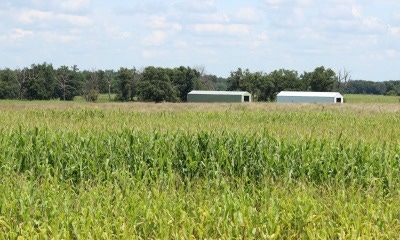July 18, 2016

It seems the worse corn looks, the bigger the response to boosting yields with a nitrogen rescue application, says University of Missouri Extension nutrient management specialist Peter Scharf.
After two decades of research by MU Scharf finds that corn yields always improve when nitrogen is applied as late as tasseling. Limited research in other states suggests that applications as late as two weeks after tasseling could be effective in relieving deficiency.

In 2015, there was plenty of nitrogen-deficient corn to study. Historic precipitation depleted applications of nitrogen made before planting. It was so wet that high-clearance fertilizer applicators had few days when they could run. Aerial applications of nitrogen were five times higher than in any previous year, but still many deficient fields were not treated.
Field-scale application equipment was in such high demand that Scharf had to use hand applications of rescue nitrogen to measure response.
Some growers and crop advisers felt cornfields were beyond hope, but research proved otherwise. "We failed to find corn that was so late and so pitiful that rescue N was unprofitable," Scharf says.
MU research plots in grower fields found that yields increased an average of 45 bushels per acre in the four most-stressed fields when rescue nitrogen was applied in 2015. "These plants were 50% tasseled, not even shoulder-high, and yellow as could be," says Scharf.
Missouri springs are becoming wetter, making the case for spring or split application of nitrogen, he says.
2015 boasted the second-wettest May-to-July period on record, falling just 0.1 inch short of a 121-year-old record.
Scharf's rule of thumb: nitrogen loss occurs when 12 or more inches of rain fall on poorly drained soils in May and June.
There's been no danger of that in 2016, with much of the state facing near-drought conditions through the end of June. Only small pockets of the state reached the 16-inch mark, mainly in the eastern Ozarks. Recent rains have not resulted in nitrogen loss.
For more information, go to plantsci.missouri.edu/nutrientmanagement.
Source: University of Missouri Extension
You May Also Like




